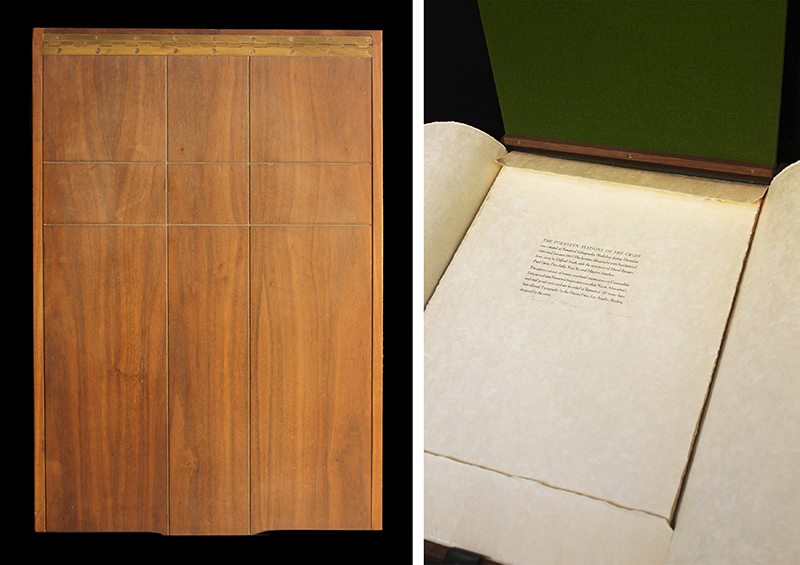
19th, 20th & 21st Century Fine Prints
707-546-7352 · fax 707-546-7924 · web: www.annexgalleries.com · email: artannex@aol.com
Fourteen Stations of the Cross (suite of lithographs) by Robert Cremean
















Fourteen Stations of the Cross (suite of lithographs)
Robert Cremean
Fourteen Stations of the Cross (suite of lithographs)
Robert Cremean
1932 - PRESENT (biography)This "Fourteen Stations of the Cross" was printed at Tamarind Lithography Workshop in Los Angeles in the mid 1960s. Printed in an edition of 20, typical for Tamarind at that time, this portfolio contains the "BAT's", the impressions by which all further editioned prints are measured against. Primarily known as a sculptor who works with large wooden subjects Cremean made each of the 20 plus felt-lined hinged walnut portfolio in his studio, each a work of art in itself.
The Master Printer, Clifford Smith, was given the B.A.T. portfolio for his participation in the project. He was assisted by printers David Barajas, Fred Gents, Don Kelly, Tony Ko and Maurice Sanchez. The brown background ink was specially mixed to the artist's specifications and keeping the color consistant from one image to another was a demanding task that the printers were able to accomplish.
The "Stations of the Cross" (also 'The Way of the Cross') is a 14-step Christian devotion that commemorates Jesus Christ's last day on Earth as a human. The 14 devotions, or stations, focus on specific events of his last day, beginning with his condemnation. The stations are commonly used as a mini pilgrimage as the individual moves from station to station. At each station, the individual recalls and meditates on a specific event from Christ's last day. Specific prayers are recited, then the individual moves to the next station until all 14 are complete.
The "stations" are: First Station - Jesus is condemned to death Second Station - Jesus carries His cross Third Station - Jesus falls the first time Fourth Station - Jesus meets his mother Fifth Station - Simon of Cyrene helps Jesus to carry his cross Sixth Station - Veronica wipes the face of Jesus Seventh Station - Jesus falls the second time Eighth Station - Jesus meets the women of Jerusalem Ninth Station - Jesus falls a third time Tenth Station - Jesus' clothes are taken away Eleventh Station - Jesus is nailed to the cross Twelfth Station - Jesus dies on the cross Thirteenth Station - The body of Jesus is taken down from the cross Fourteenth Station - Jesus is laid in the tomb
The Smithsonian Archives of American Art did an interview with Robert Cremean, conducted by Paul J. Karlstrom on September 5, 1996: They summerize the interview thusly: "The focus of the interview is Cremean's withdrawal from the commercial art market in early 1980 and his subsequent arrangement with the Fresno Arts Center (now Fresno Art Museum) to serve as the main center for his work. Cremean discusses the Fresno project and a related book undertaken by George Blair, the main funder of the museum collaboration; the philosophy behind the arrangement and the desire to take the market out of the relationship between artist and audience; Cremean's commitment to small museums and breaking the pattern of large, wealthy institutions defining culture through limited sampling; Cremean's family background, education, and career; study at Cranbrook; Fullbright to Italy; teaching at UCLA (1956-1959); his move to San Francisco Bay Area (1958); move to Tomales (1963); his relationship to galleries/dealers, mostly in Los Angeles; L.A. "culture wars" of the late 1950s and 1960s; Ferus Gallery against all others; and the victimization of Rico Lebrun's romantic humanism; a series of galleries and several important museum shows including 1976 exhibition of "Vatican Corridor" at the M.H. de Young Museum in San Francisco; autobiographical quality of work and the description of recent series as "opera"; the importance of place; and "love affair" with his valley home in Tomales."
















